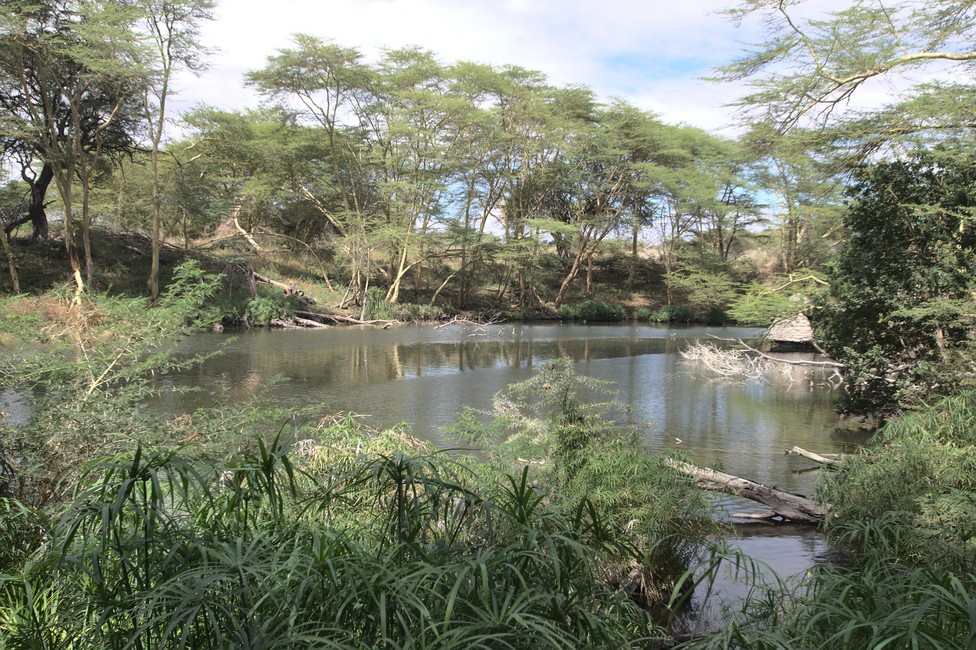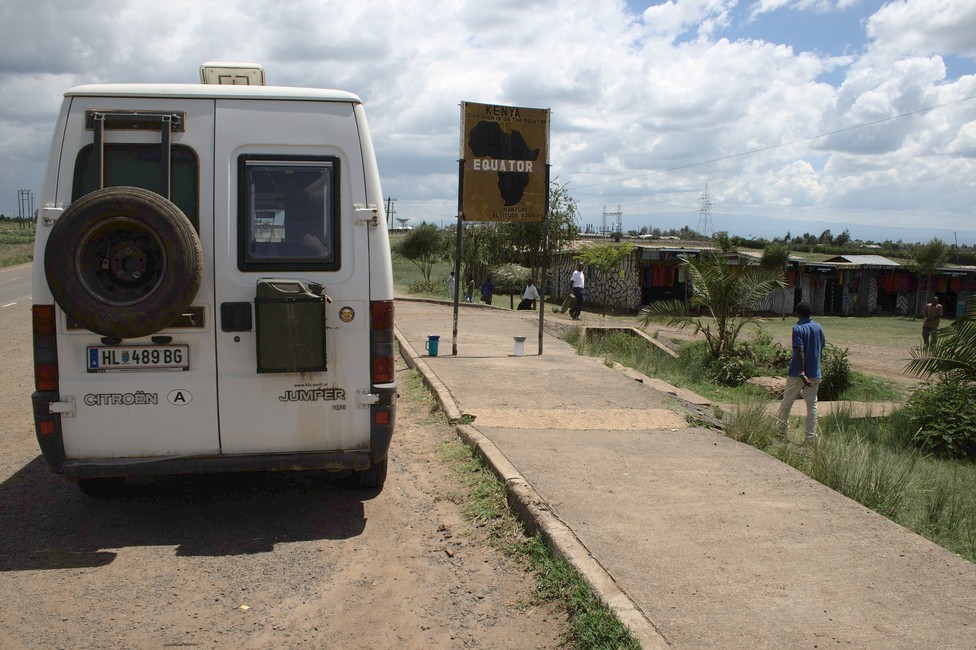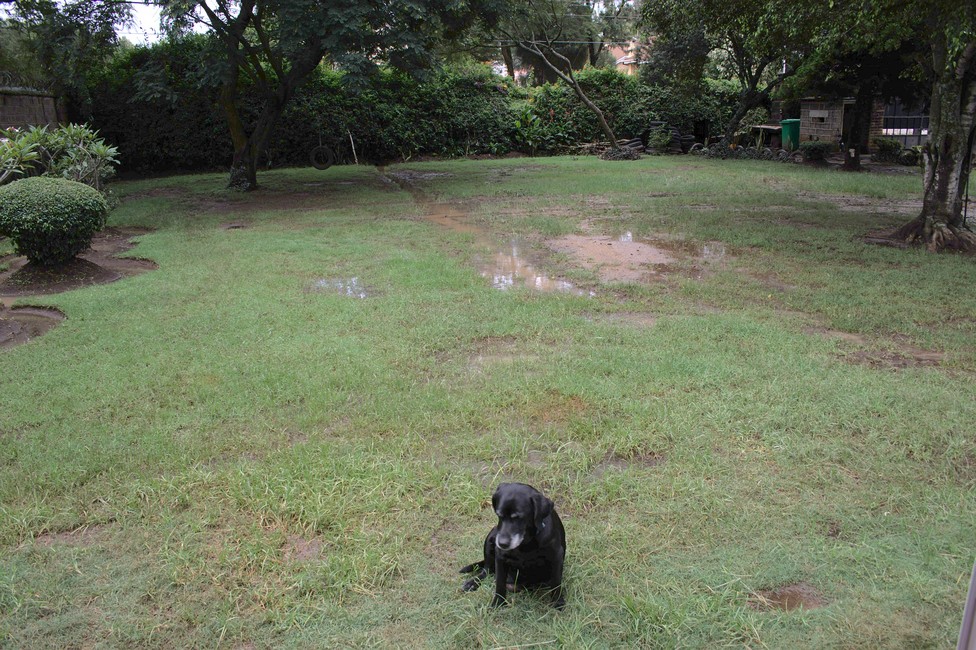Crossing the border into Kenya
We are exhausted, waiting for the veterinarian. It’s well past 5:00 PM. He was supposed to be there at 4:00 PM. Yes, this is Africa. Waiting is not foreign to us anymore; we’ve grown accustomed to it.
Tara lies exhausted between the two seats. She has grown old. The African sun is taking a toll on all three of us. TIP fees, road usage fees, and the veterinarian still need to be sorted out. At this border, things seem relatively uncomplicated. At the Tanzanian border, the officer accepted that our TIP had expired. However, the veterinarian on Kenyan side gave us a hard time. He wanted to send us back to South Africa, claiming that Tara’s passport was not valid, and we needed an import permit. He suggested that we should return to South Africa and arrange for an import permit there. I found negotiating with the veterinarian futile, so I called our friend Raj. He comes from an affluent Kenyan family, and we befriended him a few years ago. Raj was quick to offer assistance and said he would speak to the veterinarian. I handed the phone to the veterinarian, but it didn’t seem to help. Our friend said not to despair and that he would sort things out with the border officials. After a short while, the veterinarian received a call and promptly stamped the document. The border officials then waved us through.
By this time, it was already dark, a situation I didn’t like because driving at night in Africa is not a good idea. Tired and worn out, we arrived in the darkness at Tiwi Beach, specifically at the Twiga Lodge. In the following days, we spent our time at the Twiga Lodge’s campsite, with occasional trips to shop in Diani.
Tara needed to have her nails trimmed and the veterinarian managed the impossible. And, once again, the exhaust pipe was broken. We received a recommendation for a mechanic named Cowboy. He had a small workshop on a property in Ukunda. All in all, he was a very nice guy and attempted to repair the exhaust. He more or less succeeded.
November 9
In the morning, we left Tiwi Beach and headed towards Malindi. Our friend Raj, who had invited us to stay at his apartment, was waiting for us. So, for the first time, we went down outside the apartment to walk Tara, the manager of the facility saw us and wanted to kick us out immediately. However, when he heard our friend’s name, he became milder.
We celebrated my birthday at the pizzeria in the same building. Since we didn’t have internet access in our friend’s apartment, we decided to move to the camping site. The next morning, we finally moved to the Malindi camping site.
November 11
There was an Italian supermarket near the camping site. We found some good Italian wine and a Mocca machine there. We spent our days working on the computer.
November 19
The computer’s power adapter was broken, and we needed a new one. I took a Tuk Tuk to the city center to find a computer store. The salesperson was friendly, but I wasn’t sure if the power adapter would fit. I negotiated the price a bit, and he assured me that I could return it.
November 29
South African Dave, Jill’s husband, arrived. We met them in Tanzania. Dave came alone as Jill had to interrupt the trip because of her work, but was expected to come to Tiwi Beach in a few days. In the evening, we went to a nearby restaurant for dinner. Dave was in a great mood, and the evening was pleasant.
December 3
Unfortunately, the power adapter didn’t work. There were difficulties with the exchange. Dave accompanied me to the city to exchange it. Since the seller was unwilling to exchange it, we had to call the police. The police arrived, and the issue was resolved.
December 5: Malindi to Mombasa
On December 5, we left Malindi and drove to Mombasa. In Mombasa, we inquired about the repair of the exhaust again.
Eventually, we continued to Twiga Lodge, our beloved place. I spent the next few days repairing the car. I had to go to Mombasa several times to get parts. One day, I was in the workshop for a long time and Alexandra was getting worried. Tara had run away twice, walking to the end of the campsite, where she hyperventilated and sat in the grass. The second time it was already dark when she ran off. Eventually, she was found in the shower area, wagging her tail, so it was hard to be angry. The problem was that every time the neighbor pressed the central locking on the car, it made an unpleasant sound, causing her to run away out of fear. The next day, Alexandra asked the guests to park the car elsewhere since they couldn’t turn off the sound. They were very kind and immediately agreed.
December 16
Jill arrived at Mombasa Airport at midnight. Dave picked her up from there.
Next


























































